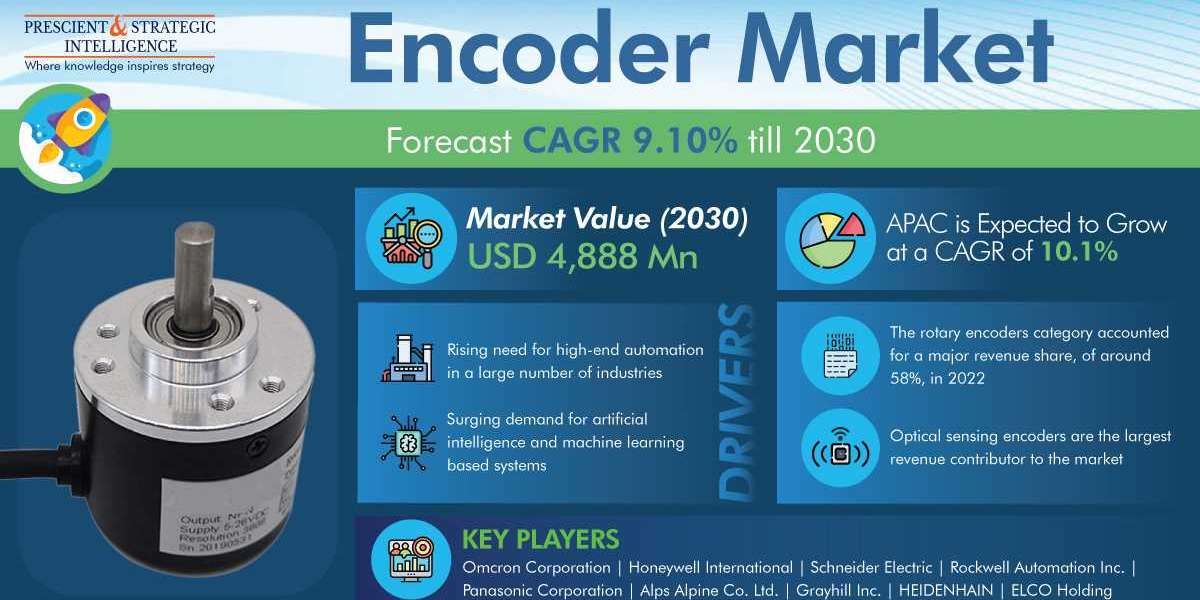The revenue generated by the encoder market was USD 2,435 million in 2022, and it will power at a rate of 9.10% in the years to come, to touch USD 4,888 million by 2030. This has a lot to do with the increasing requirement for automotive products and the growing need for automation across industries. Furthermore, the demand for AI and ML-based systems is quickly increasing, which, in line, is driving the growth of the industry.
Rotary encoders had a considerable revenue share, of around 58%, in the recent past. This is because of the increasing automation across the healthcare, aerospace, electronics, packaging, and automotive sectors for measuring the position, angular speed, and rotation of moving parts in numerous pieces of equipment.
These systems have numerous advantages, such as accuracy, reliability, high resolution, digital and fused optical technology, and low-cost feedback and digital technology, and integrated electronics.
The automotive category had a significant share in 2022, because of the increasing deployment of IoT, in which encoders are put to use for numerous reasons.
Furthermore, optical technology helps in creating a digital code for the position or angular motion of a blade, while, rotary encoders are extensively used in a number of applications, for example, robotics, industrial controls, computer input devices, climate control units, and numerous user interfaces, which necessitate unlimited rotation of a particular shaft.
Moreover, encoders are put to use in industrial spaces for the registration of mark timing, backstop gauging, web tensioning, linear measurement, filling, and conveying. In this industry, the maximum amount of electricity is used by electric motors, and the majority of them have encoders.
Additionally, these instruments are integrated into robots for supervising joint position, linear extension measurement, determining motion position, and providing gripper and force feedback.
North America dominated the encoder market, and the situation will be like this in the years to come, with the generation of USD 1,515 million, as stated by a report by PS Intelligence. This is because of the increasing manufacturing of automotive parts, rising count of cars, growing requirement for consumer electronics, and burgeoning increasing research and development activities for new and advanced technologies.
Furthermore, numerous key players have a strong foothold, thereby making it easier for users to obtain these semiconductor components. Additionally, North America leads in industrial automation, extensively accepting advanced technologies and machinery that deliver enhanced factory automation and control in the manufacturing sector. Encoders re widely integrated into PC-based scanners and answering machines.
Moreover, because of the increasing use of encoders in CNC machines, the market revenue will continue to rise in the years to come.







